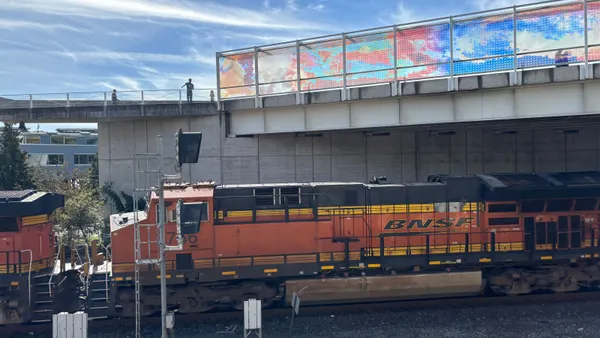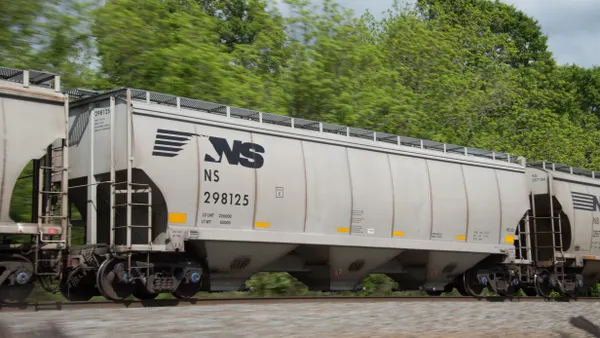Dive Brief:
- Union Pacific's second-quarter results fit with the emerging narrative that rail demand, especially intermodal traffic, is weakening on the back of a cooling economy, yet executives at the railroad said seasonal norms will emerge later in the year on their earnings call Thursday. Revenue for the quarter was down 2% year-over-year and total volume down 4%.
- Executives attributed the smaller revenue hit to progress in the railroad's transition to precision-scheduled railroading (PSR), deemed the Unified Plan 2020, stating increased operational efficiency dulled the revenue impact of depressed volume. The dip in volume stemmed mainly from lower energy shipments (down 9%) and intermodal traffic (down 11%). The railroad expects to lose more intermodal volume to highways as the trucking market moderates through the balance of the year.
- Though yard closures associated with Unified 2020 have impacted some lanes and brought volume down somewhat, Executive Vice President of Marketing and Sales Kenny Rocker called the impact on overall volume "minimal." The railroad has closed or curtailed operations at at least four hump yards in order to increase efficiency and train velocity. "When we fix these touch points that we have, we end up with the best service that we can provide and we grow with our customers," said COO Jim Vena.
Dive Insight:
UP's revenue decline was in line with CSX's 1.32% loss as reported earlier this week, and analysts are still attempting to sniff out the source of "softness" in rail demand. As CSX's Jim Foote did Tuesday, Rocker named trade uncertainty and a more competitive truck market, but UP executives added that operational efficiency progress will not change even if current trends continue.
"We're not going to use the lack of volume as an excuse not to make aggressive achievements on our productivity," said CFO Rob Knight. UP's operating ratio, a key metric of efficiency often at the center PSR transitions, dropped to an all-time low of 59.6% for the quarter. But one quarter below the railroad's 2019 goal of a sub-61% OR does not mean the work is done.
Dwell time and car velocity improved in the quarter, but trip plan compliance dropped slightly — which executives blamed on the weather. Knight said the plan is still in "early innings."
Even though a more efficient railroad is better equipped to face weather-related service challenges from a financial standpoint, weather-related interruptions throw a wrench in the great PSR experiment taking place at several Class 1 U.S. railroads right now.
If the economy is indeed cooling, this too could dirty up the PSR performance data. On that front, Rocker said customers are telling the railroad to expect a normal peak season, drawing the team to conclude the impact of inventory pull-forward due to the expected, but then suspended, tariffs is over.
Though some of the decline in overall volume for UP could be attributed to flooding affecting the railroad's network, a projected 10% reduction in headcount by the end of the year was not due to the weather or trends affecting volume. The cuts are an expected part of the Unified Plan 2020. "We've taken a lot of work out of the network and it's being reflected now on our manpower ... There are more of those adjustments to be made as the network continues to stabilize and as we continue to find opportunity," said CEO Lance Fritz.














